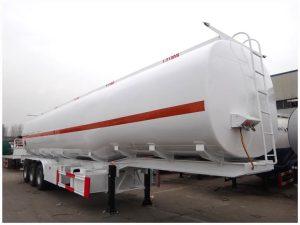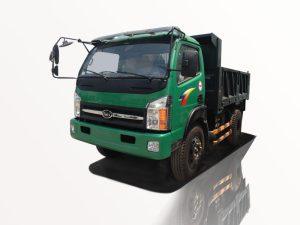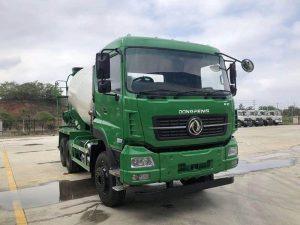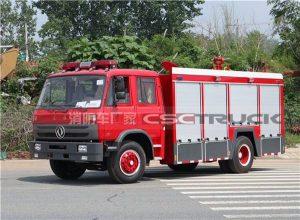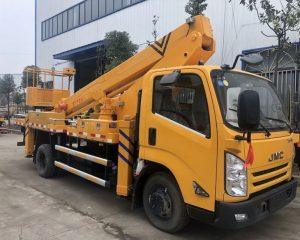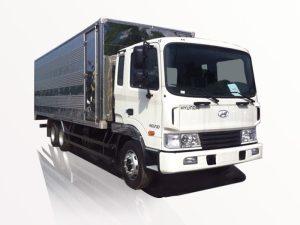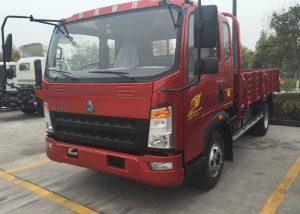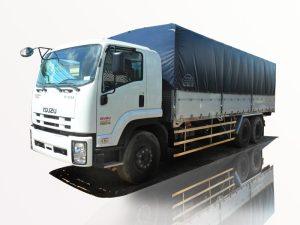Monday to Saturday - 8:00 -17:30
Ultimate Guide to Rollback Wrecker Trucks: Everything You Need to Know
Rollback wrecker trucks are a vital part of the towing industry, specifically designed for transporting vehicles safely and efficiently. Whether you are a business owner in the towing industry or an individual interested in understanding these machines better, this article will provide a comprehensive overview of rollback wrecker trucks, their features, types, maintenance, and operational tips.
What is a Rollback Wrecker Truck?
A rollback wrecker truck, also known as a flatbed wrecker, features a flat, hydraulically inclined platform that allows vehicles to be loaded and unloaded effortlessly. Unlike traditional tow trucks, which use chains and hooks, rollback trucks provide a stable and secure platform for securing vehicles, minimizing the risk of damage during transport.
Features of Rollback Wrecker Trucks
1. Flatbed Design
The flatbed design is the primary feature of rollback wrecker trucks. This design enables easy loading and unloading of vehicles by simply tilting the flatbed down to the ground and allowing the vehicle to roll on or off.
2. Hydraulic System
The hydraulic system is crucial for the operation of a rollback wrecker truck. This system allows the driver to tilt the bed and lift or lower it depending on the situation, offering versatility and ease of use.
3. Winch System
Many rollback wrecker trucks come equipped with a winch, which helps in pulling vehicles onto the flatbed, especially when the vehicle is immobile. The winch adds to the versatility and capability of these trucks.
4. Securement Straps
To ensure that loaded vehicles remain secure during transport, rollback wrecker trucks are equipped with securement straps or chains. Properly securing the load is crucial for safety while driving on the road.
5. Integrated Lighting
Rollback trucks often have integrated lighting systems to enhance visibility during nighttime operations. The addition of LED lights on the truck and the flatbed can facilitate safe loading and unloading.
6. Diverse Towing Capacity
Rollback wrecker trucks come in different sizes and capacities, enabling them to tow a wide range of vehicles, from cars to larger vans and trucks. It is crucial to choose the right model based on the intended use and requirements.
Types of Rollback Wrecker Trucks
1. Light-Duty Rollback Wrecker Trucks
Light-duty rollback trucks typically have a towing capacity of 7,000 to 10,000 pounds and are designed for smaller cars and light trucks. They are ideal for businesses focused on local towing services.
2. Medium-Duty Rollback Wrecker Trucks
Medium-duty rollback trucks can handle towing capacities of 10,000 to 20,000 pounds, making them suitable for medium-sized vehicles like SUVs and vans. They often feature a more powerful engine and larger flatbed.
3. Heavy-Duty Rollback Wrecker Trucks
Heavy-duty rollback trucks are designed for the toughest jobs, with capacities exceeding 20,000 pounds. These trucks are ideal for towing heavy-duty vehicles, including larger trucks and machinery.
Comparative Table of Rollback Wrecker Truck Types
| Type | Towing Capacity (lbs) | Ideal Vehicles |
|---|---|---|
| Light-Duty | 7,000 – 10,000 | Cars, Light Trucks |
| Medium-Duty | 10,000 – 20,000 | SUVs, Vans |
| Heavy-Duty | 20,000+ | Heavy Trucks, Machinery |
How to Choose the Right Rollback Wrecker Truck
1. Determine Your Needs
Consider the type of vehicles you will be towing and the range of operations you plan to provide. Understanding your specific needs will help narrow down your options.
2. Check the Towing Capacity
Towing capacity is one of the most critical factors when selecting a rollback wrecker truck. Ensure that the truck can comfortably tow the heaviest vehicle you anticipate handling.
3. Evaluate Build Quality
The durability and build quality of the truck is vital in ensuring it can withstand repeated use without significant wear. Look for reputable brands known for their reliability.
4. Consider Safety Features
Look for systems such as securement straps, integrated lighting, and additional safety features that can prevent accidents during loading, unloading, and transport.
5. Budget
Cost is always a consideration. Determine your budget and factor in maintenance costs, insurance, and potential financing options when making your choice.
Maintenance of Rollback Wrecker Trucks
1. Conduct Regular Inspections
Performing regular inspections of your rollback wrecker truck can prevent costly repairs. Check for signs of wear on the hydraulic system, brakes, tires, and the towing mechanism.
2. Maintain the Hydraulic System
Timely checks and maintenance of the hydraulic system can prevent failures that render the truck unusable. Look for leaks and ensure fluid levels are adequate.
3. Tires and Brakes
Tires and brakes are critical safety features of your wrecker truck. Regularly check for tread wear, proper inflation, and brake performance to ensure reliable operation.
4. Clean the Truck
Regular cleaning of the rollback platform and body of the truck can prevent rust and other damage from debris and harsh weather conditions. A clean truck also looks more professional.
5. Schedule Professional Service
While regular self-checks are crucial, schedule professional servicing to ensure the truck is in optimal operating condition. This can include checking the engine, transmission, and overall performance.
Operational Tips for Rollback Wrecker Trucks
1. Loading Techniques
When loading vehicles, position the rollback truck parallel to the vehicle being towed. Tilt the flatbed down, and use the winch to pull the vehicle onto the platform. Always confirm the vehicle is secured before transporting.
2. Unloading Procedures
To unload, bring the rollback truck to a safe and level area, tilt the bed down, and slowly allow the vehicle to roll off. Ensure the area is clear of obstacles for a safe descent.
3. Driving Safety
When driving a rollback wrecker truck, always be cautious of the load. Do not exceed speed limits and maintain adequate distance from other vehicles. Ensure that the center of gravity is balanced to prevent tipping.
4. Communication with Dispatch
Good communication with your dispatch team can improve response times and efficiency in the field. Always confirm the details of the vehicle to be towed and the destination.
5. Documenting Tows
Keeping accurate records of towed vehicles, including owner information and any damages, is crucial for both legal and operational purposes. Implement a systematic way of documenting each tow.
Cost Considerations for Rollback Wrecker Trucks
1. Purchase Costs
The cost of a rollback wrecker truck can vary significantly based on make, model, and condition. On average, a new rollback truck can range from $50,000 to $150,000 or more.
2. Maintenance and Repairs
Operational costs can accumulate due to routine maintenance and occasional repairs. Budgeting for these expenses is crucial in ensuring the longevity of the truck.
3. Fuel Costs
Rollback wrecker trucks can consume a considerable amount of fuel, especially heavy-duty models. Understanding your fuel consumption pattern can help in budgeting accordingly.
4. Insurance Costs
Insurance for rollback wrecker trucks might be higher than regular vehicles due to their commercial nature and the risks involved. Work with an insurance agent familiar with the towing industry to find the right coverage.
5. Driver Training
Investing in training for your drivers can reduce the risk of accidents and damage, ultimately saving costs in the long run. Proper training ensures safe handling of the truck and the loads.
Frequently Asked Questions (FAQs)
1. What vehicles can a rollback wrecker truck tow?
Rollback wrecker trucks can tow a wide range of vehicles, from small cars and SUVs to larger vans and heavy-duty trucks, depending on their lifting capacity.
2. How do you load a vehicle onto a rollback wrecker truck?
To load a vehicle, position the rollback truck parallel to the vehicle, tilt the flatbed down, and use the winch to pull the vehicle onto the platform once it’s secure.
3. What maintenance is required for rollback wrecker trucks?
Maintenance includes regular inspections of the hydraulic system, brakes, tires, and conducting professional services periodically to ensure all functions are optimal.
4. Are rollback wrecker trucks better than traditional tow trucks?
Rollback wrecker trucks reduce the risk of damage to the vehicle being towed, providing a safer and more efficient towing solution compared to traditional tow trucks that rely on chains and hooks.
5. How much does a rollback wrecker truck cost?
The price of a rollback wrecker truck varies widely based on make and model but typically ranges from $50,000 to $150,000 for new trucks.
6. Can I use a rollback wrecker truck for personal use?
While rollback wrecker trucks are primarily used for commercial towing operations, individuals can also use them for personal vehicle transport if they have the appropriate licenses and insurance.


